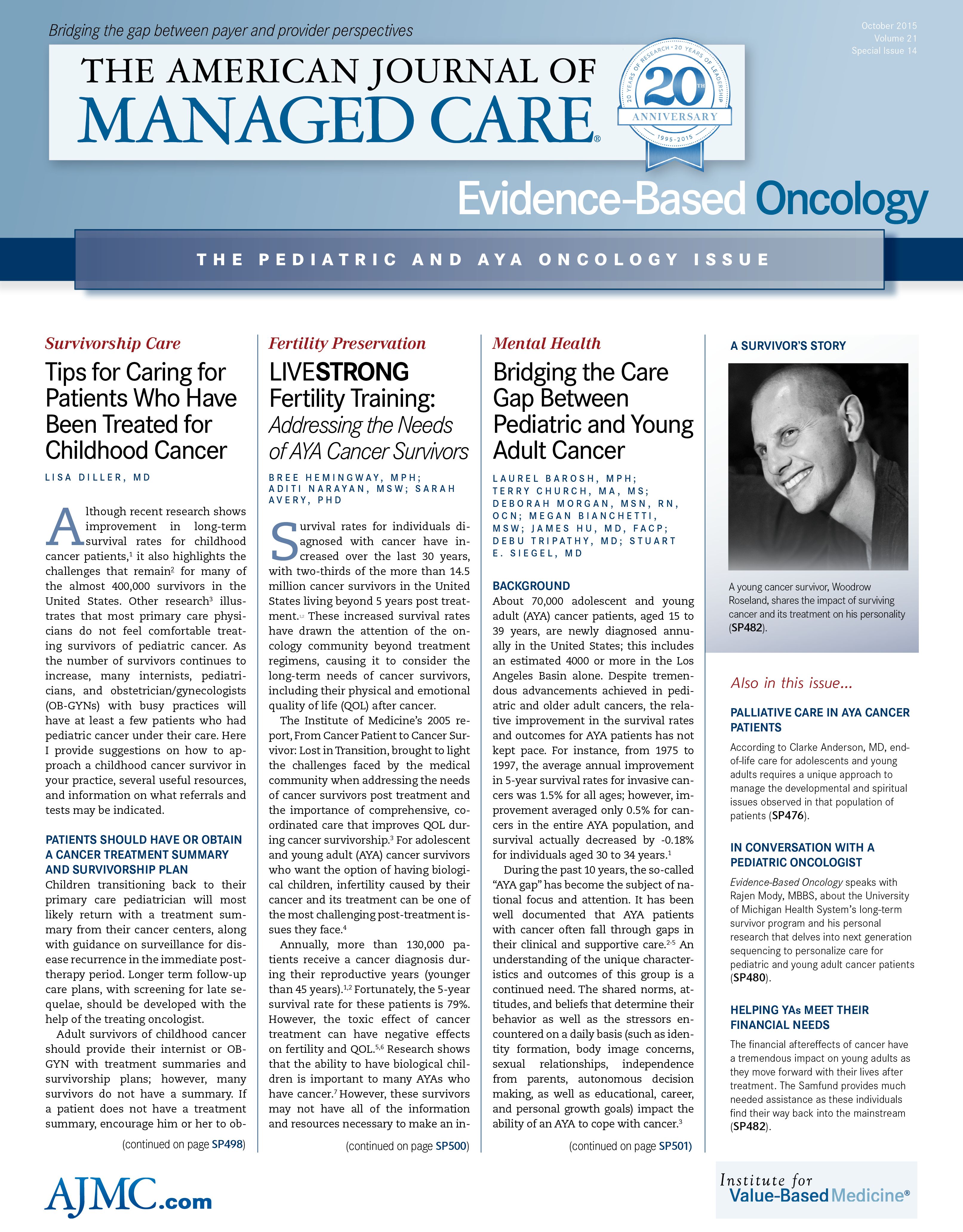- Center on Health Equity & Access
- Clinical
- Health Care Cost
- Health Care Delivery
- Insurance
- Policy
- Technology
- Value-Based Care
Using a Gene Expression Assay to Predict Response to NAC in Breast Cancer
Evaluation of Prosigna's risk of relapse score as a predictor of response to multiagent neoadjuvant chemotherapy in HR+/HER2 breast cancer patients.
Study Review
Described by the National Cancer Institute as treatment administered prior to the primary therapy,1 neoadjuvant chemotherapy (NAC) for women diagnosed with breast cancer can help shrink a tumor prior to surgery, which can make the procedure minimally invasive and potentially influence prognosis.
Research has shown that chemotherapy prior to surgery can allow for a lumpectomy instead of a mastectomy, resulting in breast conservation. One such study published in the late 1990s monitored 1523 women enrolled in the National Surgical Adjuvant Breast and Bowel Project B-18. Clinical tumor response (complete, partial, or none), disease-free survival, distant disease-free survival, and survival were monitored and compared between randomly assigned preoperative and postoperative chemotherapy groups. The results showed that although preoperative chemotherapy is as effective as postoperative chemotherapy, treatment prior to surgery allows significantly more lumpectomies and is suitable for patients with early stage disease.2
Tests that can predict patient response to NAC can help determine eligibility for chemotherapy and protect patients from unnecessary exposure to poisonous treatment if it will not be effective. A study published in the journal Clinical Cancer Research has done just that.3 In collaboration with the developers (NanoString Technologies) of the Prosigna assay, the authors evaluated the performance of core needle biopsy (CNB) samples and determined if the Prosigna risk of relapse (ROR) score and intrinsic subtype could identify patients who will not respond to NAC, thus preventing unnecessary treatments and the associated cost.
The Prosigna assay uses gene expression data which is weighted with clinical variables to generate an ROR score to predict risk of distant recurrence. The authors evaluated the combination of Prosigna ROR and intrinsic subtype as predictor of response to multiagent NAC in HR+/HER2 patients. They also examined whether the ROR score of a CNB sample and the corresponding surgical resection specimens (SRS) were correlated.
Study Samples
The authors collected 122 formalin-fixed paraffin embedded (FFPE) tumor blocks with CNB samples from 95 patients who were newly diagnosed with breast cancer between 2008 and 2014 (designated as the CNB sample set). The metastatic study population included 40 FFPE tumor blocks containing CNB or excisional biopsy samples from metastatic lesions in the skin, lymph node, lung, and liver, gathered from a single institute. The SRS study population included 30 independent samples selected from the CNB development sample set that had a corresponding CNB. Surgical resection was between 14 to 21 days following biopsy. Chemo-prediction validation was conducted in 216 HR+/HER2-breast tumor samples from a multi-center Spanish cohort. Outcomes in 180 CNB samples from HR+/HER2 patients treated with NAC, measured as pathological response, was correlated with ROR.
Analysis and Results
Intra- and inter-biopsy variability, the authors found, was 2.2 and 6.8 ROR units, respectively, as evaluated from 79 CNBs from 30 independent tumors. A high correlation in ROR score was observed between 33 paired CNBs and SRS (R ≥0.9). Individual gene correlation between CNB and SRS, conducted for each gene included in the Prosigna assay, identified a median correlation coefficient of 0.91.
EBO
When evaluating the molecular subtypes of biopsied breast tissue samples, the Prosigna test could successfully classify 85.7% of ER-negative samples as nonluminal, 90.6% of ER-positive samples as luminal, and 100% of HER2-positive samples as HER2-enriched. Univariate analysis of ROR score, intrinsic subtype, and residual cancer burden (RCB, which determines the overall NAC response rate) found that the continuous ROR score was a significant predictor of response to NAC. The authors also found that the ROR score is greater for tumor samples that have an increased expression of genes that drive cell proliferation. More specifically, a 20-point increase in the ROR score increased the likelihood of a patient’s response to NAC by 59.1%. Prosigna ROR score and intrinsic subtype are strong predictors of response to chemotherapy in the neoadjuvant setting, the authors conclude.
References
- Adjuvant and neoadjuvant therapy for breast cancer. National Cancer Institute website. www.cancer.gov/types/breast/adjuvant-fact-sheet#q5. Accessed September 3, 2015.
- Fisher B, Bryant J, Wolmark N, et al. Effect of preoperative chemotherapy on the outcome of women with operable breast cancer. J Clin Oncol. 1998;16(8):2672-2685.
- Prat A, Galván P, Jimenez B, et al. Prediction of response to neoadjuvant chemotherapy using core needle biopsy samples with the Prosigna assay [published online July 7, 2015]. Clin Cancer Res. pii: clincanres.0630.2015.


